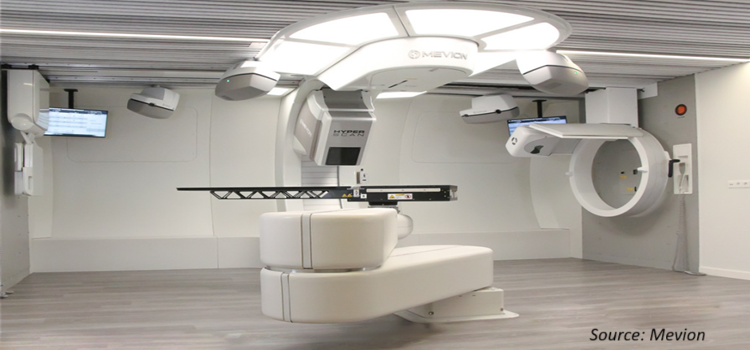
Body Fat Measurement Market by Product (X-Ray Absorptiometry, Skinfold Calipers, Hydrostatic Weighing Equipment, Air Displacement Plethysmography, Bio-impedance Analyzer, Dual Energy X-ray Absorptiometry, and Others), and by End User (Fitness Clubs and Wellness Centers, Hospitals, Academic & Research Centers, and Others) – Global Opportunity Analysis and Industry Forecast 2023–2030
US Tariff Impact on Body Fat Measurement Market
Trump Tariffs Are Reshaping Global Business
Market Definition
The global Body Fat Measurement Market size was valued at USD 0.66 billion in 2022, and is predicted to reach 1.15 billion by 2030, with a CAGR of 7.03% from 2023 to 2030. Body fat measurement is a procedure for calculating percentage of total fats present in the body with help of impedance meters.
There are two types of fats contained in the body such as essential body fat and storage body fat. Essential body fat is necessary to maintain life and reproductive functions, whereas storage body fat is accumulated in the adipose tissues that protects internal organs such as chest and abdomen.
Body fat can be measured by using several methods such as measurement via callipers or using bioelectrical impedance meters (BIA). Use of calipers is the easiest, cheapest, and portable method to measure body fat in specific areas. BIA measures body fat, based on the rate at which an electrical current travel through the body. Thus, these two devices help in recognizing potential risks associated with low or high levels of body fat.
Market Dynamics and Trends
Rise in demand for body fat measurement owing to rapid growth in the obese population caused by unhealthy eating habits and sedentary lifestyles, coupled with desk-bound jobs and physical inactivity across the globe propels the market growth. According to the United Nations more than one billion people worldwide are obese, including 650 million adults, 340 million adolescents, and 39 million children. Furthermore, with the numbers still increasing, WHO estimates that by 2025, approximately 167 million people will become less healthy because they are overweight or obese.
In addition, growth in health and fitness consciousness among people to obtain optimum fitness goals and rise of body weight management propels growth of the market. For instance, according to Boston Medical Center (BMC), an estimated 45 million Americans go on a diet and spend 33 billion USD on weight-loss products each year. Moreover, increase in carbohydrate and sugar intake, along with inclination of consumers toward fruits and vegetables in their diet further propels growth of the market. For instance, in 2021, according to Food & Health Survey, around 20% of respondents in the U.S. believed that carbohydrates are the most common cause for weight gain.
However, high cost of body fat measurement equipment is expected to restrain growth of the market during the forecast period. On the contrary, improved ability to accurately measure body composition and body fat with advanced technology such as loT-based body analyzers that enables connectivity with mobile phones are expected to create ample opportunities for the market players in the coming years.
Market Segmentation and Scope of the Study
The global body fat measurement market share is segmented on the basis of product, end user, and region. On the basis of product, the market is categorized into x-ray absorptiometry, skinfold calipers, hydrostatic weighing equipment, air displacement plethysmography, bio-impedance analyzer, dual energy x-ray absorptiometry, and others. On the basis of end user, it is segmented into fitness clubs & wellness centers, hospitals, academic & research centers, and others. Region wise, the market is analyzed across North America, Europe, Asia-Pacific, and Row.
Geographical analysis
North America holds a dominant share of the global body fat measurement market and is expected to continue its dominance during the forecast period. Growth in cases of obesity in the people, owing to high consumption of flour-based items such as bread, pasta, noodles, and wafers in this region boosts the growth of the market. For instance, according to the U.S. Department of Agriculture; Economic Research Service, the per capita consumption of wheat flour in the country accounted for around 127.3 pounds in 2021.
In addition, the accessibility and convenience of weight loss clinics such as All-American Weight Loss and Wellness and Revere Health Weight Loss and Nutrition create awareness among people regarding the side effects of being overweight, which is expected to drive the market in this region.
On the other hand, Asia-Pacific is expected to show a swift rise in the body fat measurement market, owing to an increase in technological advancements and growth in innovation in body fat measurement products. For instance, in January 2020, BMI, in January 2020, InBody introduced the inBody 970, a cutting-edge device that incorporates patented technology to effectively categorize and evaluate abdominal fat and total body water. With the capability to measure each body segment at frequencies up to 3MHz, it offers an extensive and comprehensive analysis of extracellular and intracellular water. This advanced system provides detailed information spanning multiple pages, enabling in-depth insights into body composition and hydration status.
Moreover, the fitness industry has experienced significant growth in recent years, with an increase in number of people participating in activities such as weightlifting, bodybuilding, and CrossFit. These activities often require precise body fat measurement to track progress and achieve fitness goals, which is expected to boost the body fat measurement market growth.
As per a report published by the government of Japan in 2021, the rate of participation in sports was found to be 68.8% in 2020. The report further revealed that males had a higher participation rate of 73.5% compared to females at 64.4%. In addition, walking or light physical exercise had the highest participation rate at 41.3%, followed by training with gym equipment at 14.7%.
Competitive Landscape
Various market players operating in the global body fat measurement industry include InBody Co., Ltd, GE Healthcare, DexaFit, MyTScan Corp. Accufitness LLC, Diagnostic Medical Systems Group, Inbody Co. Ltd., Omron Healthcare, and Tanita Corporation. These market players are adopting various strategies such as product launches and innovation across various regions to maintain their dominance in the body fat measurement market. For instance, in April 2022, DexaFit announced the launch of their mobile DXA scanner, which is a portable version of the traditional DXA scanner used to measure body fat percentage and bone density.
Also, in July 2021, Omron Healthcare launched a campaign ‘Know your Body Inside out, then workout’. The campaign was to make people aware of body fat, skeletal muscle, visceral fat, body age, and resting metabolism that leads to several diseases in the body.
Key Benefits
-
The report provides quantitative analysis and estimations of the body fat measurement market from 2023 to 2030, which assists in identifying the prevailing industry opportunities.
-
The study comprises a deep dive analysis of the body fat measurement industry, including the current and future trends to depict prevalent investment pockets in the market.
-
Information related to key drivers, restraints, and opportunities and their impact on the global market is provided in the report.
-
Competitive analysis of the players, along with their market share is provided in the report.
-
SWOT analysis and Porter's Five Forces model is elaborated in the study.
-
Value chain analysis in the market study provides a clear picture of the roles of stakeholders.
Body Fat Measurement Market Key Segments
By Product
-
X-ray Absorptiometry
-
Skinfold Calipers
-
Hydrostatic Weighing Equipment
-
Air Displacement Plethysmography
-
Bio-impedance Analyzer
-
Dual Energy X-ray Absorptiometry
-
Others
By End User
-
Fitness Clubs and Wellness Centers
-
Hospitals
-
Academic & Research Centers
-
Others
By Region
-
North America
-
U.S.
-
Canada
-
Mexico
-
-
Europe
-
UK
-
Germany
-
France
-
Italy
-
Spain
-
Denmark
-
Netherlands
-
Finland
-
Sweden
-
Norway
-
Russia
-
Rest of Europe
-
-
Asia Pacific
-
China
-
Japan
-
India
-
South Korea
-
Australia
-
Indonesia
-
Singapore
-
Taiwan
-
Thailand
-
Rest of Asia-Pacific
-
-
Rest of World
-
Latin America
-
Middle East
-
Africa
-
Key Players
-
InBody Co.Ltd
-
GE Healthcare
-
DexaFit
-
Bello
-
MyTScan Corp
-
Accufitness LLC
-
Diagnostic Medical Systems Group
-
Inbody Co. Ltd.
-
Omron Healthcare
-
Tanita Corporation

















 Speak to Our Analyst
Speak to Our Analyst





















